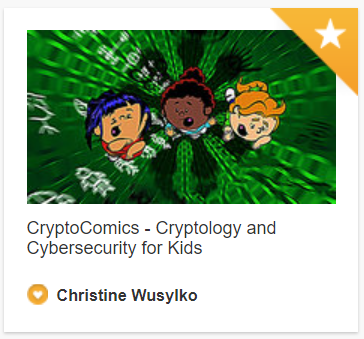Cultivating Elementary Students' Interest in Cryptography and Cybersecurity Education and Careers
Description
Recent technological advances have popularized cryptography, the art of making and breaking codes. This project will capitalize on the societal interest in cybersecurity and cryptography and explore how the skills that underlie the encrypting and decrypting practices in cryptography parallel the skills that children must develop to become successful readers and writers. Given the importance of cryptography and cybersecurity, the project will introduce a new technology-enhanced STEM education model for engaging children of 7-10 years old, particularly girls, in cryptography and cybersecurity building and STEM identity development as they make and break secret codes. The mystery of the subject, its relevance in today's society, and interactive learning experiences will engage children, and the after-school environment where the project will be performed will provide a safe space for them to learn at their own pace. The important scientific and educational outcomes will include improved understanding of how literacy, self-efficacy, computational thinking, 21st century skills, and interest in cryptography and cybersecurity can be fostered at the elementary school level.
The focus of this project is to conduct a systematic investigation of the effective conditions for designing and implementing touch-screen enhanced visuospatial learning curricula that foster STEM interest and career awareness using the unique context of cryptography. An interdisciplinary team of K-12 after-school teacher leaders, education technologists, special educators, computer scientists, and STEM education researchers will design a 6-week, 24-hour program of cryptography focused apps and activities for upper elementary students (grades 3-5) in after-school programs that serve primarily girls and African American students. To encourage adoption and facilitate dissemination, the Codebreakers curriculum will be available online in the form of an interactive, touch-friendly website. A mixed-method research design will employ a range of methods including phenomenology, comparative case studies, pretest-posttest analyses, and mixed-effects modeling. The project will use qualitative data to explore students' and teachers' perceptions and experiences with the Codebreakers activities and technology. Quantitative data will be used to make inferences regarding the quantifiable impacts of the strategy on the development of students' self-efficacy, interest and identity in STEM, evolution of their understanding of cryptography and cybersecurity, and the development of their morphological awareness. Ongoing professional development (PD) and support will be provided face-to-face during bi-weekly meetings with teacher leaders and using the Codebreakers online social network.
This award reflects NSF's statutory mission and has been deemed worthy of support through evaluation using the Foundation's intellectual merit and broader impacts review criteria.
WEBSITES
Social Media
